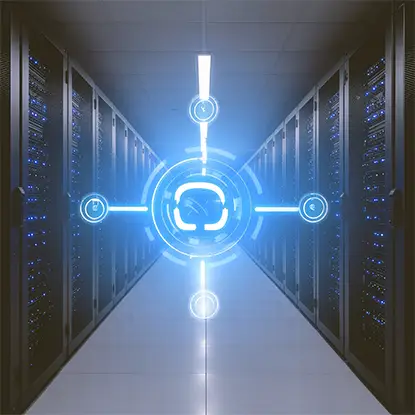How Technology and Software
Affect Your IP Address


Yes, your IP address can change, and for many people it changes more often than they realize. The frequency depends on how you connect to the internet, the policies of your internet provider, and whether you move between networks. Think of an IP address like a return address on a letter: most of the time you keep the one you’re given, but under common circumstances it can be reassigned, refreshed, or replaced altogether.
For home users, “dynamic” addressing is the norm. Your provider’s system loans you an address for a period (called a lease). That lease can renew to the same address or flip to a different one. On mobile data, changes are even more common because carriers route huge numbers of devices through shared systems that can shift as you move or reconnect.

Control how your business data moves, just like your IP. With docAlpha, leverage AI-powered automation to manage document workflows, improve traceability, and reduce IT complexity.
Before worrying about change, it helps to know which address we’re talking about. You have two layers of addresses in play:
Your private (local) IP is the number your router gives your phone, laptop, TV, and other devices, usually something like 192.168.x.x. This can change whenever devices reconnect, when the router restarts, or when its internal leasing schedule rolls over. These private addresses stay inside your home or office and aren’t visible to websites.
Your public IP is the outward-facing address the rest of the internet sees, assigned by your internet service provider or mobile carrier. When people ask “does your IP address change,” they almost always mean this public one. It’s the address websites log and analytics tools record.
Recommended reading: How Tools and Technology Are Transforming Business Workflows
Public IPs change primarily because of how providers manage their networks. Most residential plans use DHCP (Dynamic Host Configuration Protocol), which hands out addresses from a pool and can move you to a new one when the lease renews. Rebooting a modem or router after a long power outage can also trigger a fresh assignment. Switching from home Wi-Fi to cellular, or between different Wi-Fi hotspots, naturally gives you a different public IP, because you’re using a different upstream network.
On the other hand, some customers choose a static IP plan from their provider, which aims to keep the same public address over time. Businesses often prefer this for hosting or reliable remote access. Even then, rare network migrations or account changes can cause a swap, but it’s the exception.
Optimize AP Workflows With AI Intelligence
Need consistent performance like a static IP? InvoiceAction automates invoice processing to reduce delays, eliminate manual errors, and provide visibility into
every payment cycle.
Book a demo now
Below is a quick reference to common situations and how they affect your address.
Scenario | What Usually Changes | How Often | What to Expect |
Home broadband with dynamic plan | Public IP | Occasionally (lease renewals, after long reboots) | May keep same address for weeks, then switch unpredictably |
Power-cycling modem/router | Public IP | Sometimes | New address if your provider assigns a different lease |
Moving between Wi-Fi and mobile data | Public IP | Frequently | Address changes because you’re on a different network |
Inside your home network (device reconnects) | Private IP | Occasionally | Local device number can change; websites won’t see this |
Using an intermediary like a proxy service | Public IP (outbound) | As configured | You appear online with the service’s provided address |
Recommended reading: Process Automation: Driving Business Growth with Technology
Want proof rather than theory? Here’s a simple routine you can repeat any time.
If you only see changes on your private IP (like 192.168.1.23 becoming 192.168.1.45) while the public IP stays the same, that’s normal. The internet at large still sees you as coming from the same public address.

Switching networks? Don’t let order management lag behind. OrderAction uses AI to automate sales order processing across platforms, no matter how often your system changes.
If your work relies on consistent or varied IPs, think QA testing, localization checks, ad verification, pricing audits, or market research, you might want deliberate control. One route is to ask your provider about a static IP plan for stability. Another is to use a reputable proxy solution that lets you choose when and how your outward-facing IP rotates, or stay “sticky” for longer sessions. Services such as proxys.io offer options for selecting locations, rotating intervals, and session persistence, giving you predictable behavior without relying on chance lease renewals.
Recommended reading: Document Capture Technology: Best Tips and Tricks
“Does your IP address change?” Yes, especially on dynamic home broadband and mobile networks.
“Can I stop it from changing?” Ask your provider about a static IP, or use managed services that keep sessions stable.
“Why did mine change overnight?” Your DHCP lease likely renewed and assigned a different address.
“Why does it change when I leave the house?” Because you’ve switched to a different upstream network with its own address pool.
“Do websites care which device I’m on at home?” Not really, they mostly see your single public IP from the router, even though your internal device IPs can change.
When you know which IP you’re looking at, and why it changes, the mystery fades. With the right setup, you can keep things steady, or rotate by design when your tasks demand it.
Intelligent Process Automation For Changing Infrastructures
As your tech stack evolves, so should your business processes. From document capture to payments, Artsyl’s AI-powered platform adapts to your infrastructure, IP changes and all.
Book a demo now